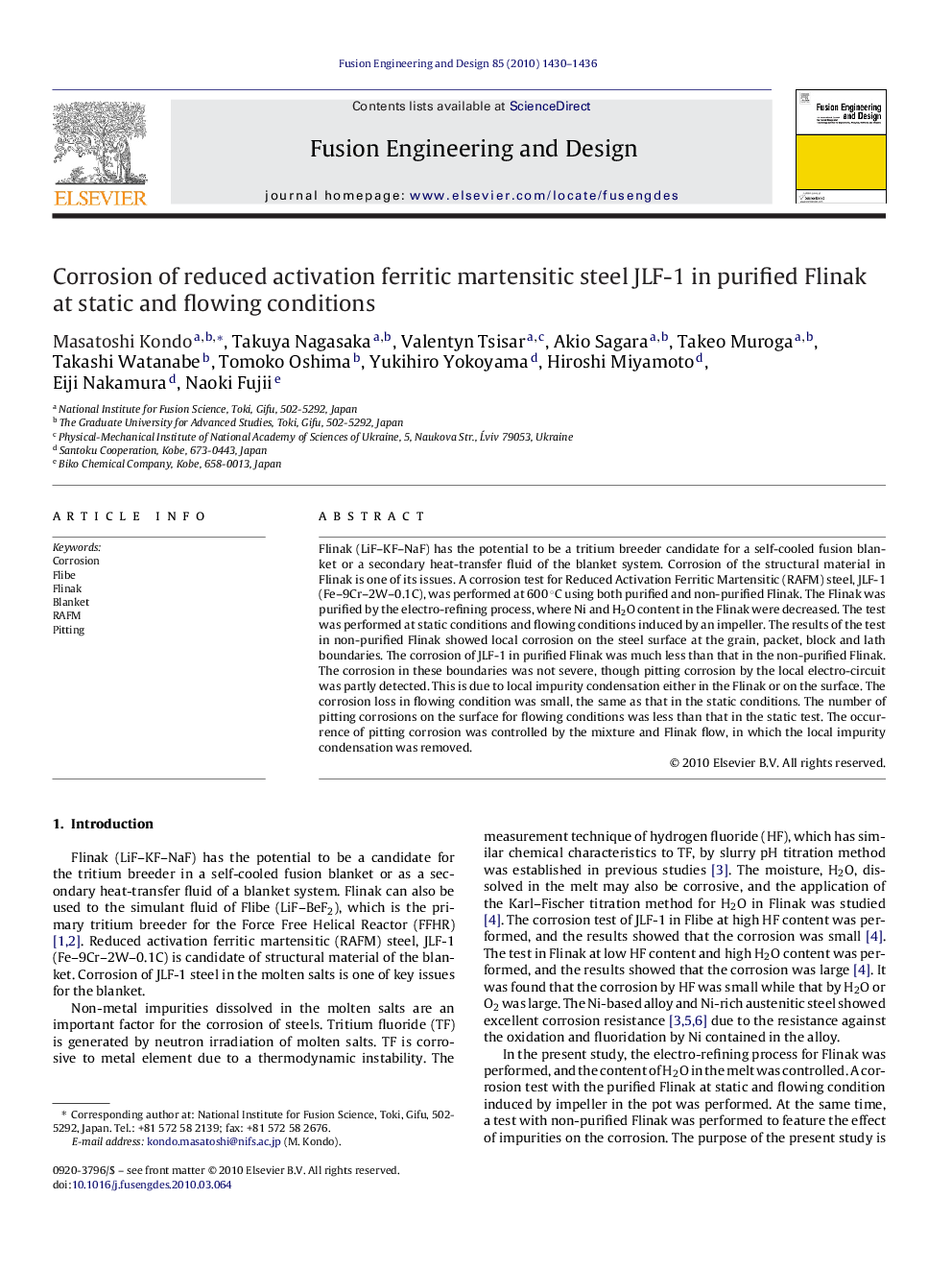| Article ID | Journal | Published Year | Pages | File Type |
|---|---|---|---|---|
| 271987 | Fusion Engineering and Design | 2010 | 7 Pages |
Flinak (LiF–KF–NaF) has the potential to be a tritium breeder candidate for a self-cooled fusion blanket or a secondary heat-transfer fluid of the blanket system. Corrosion of the structural material in Flinak is one of its issues. A corrosion test for Reduced Activation Ferritic Martensitic (RAFM) steel, JLF-1 (Fe–9Cr–2W–0.1C), was performed at 600 °C using both purified and non-purified Flinak. The Flinak was purified by the electro-refining process, where Ni and H2O content in the Flinak were decreased. The test was performed at static conditions and flowing conditions induced by an impeller. The results of the test in non-purified Flinak showed local corrosion on the steel surface at the grain, packet, block and lath boundaries. The corrosion of JLF-1 in purified Flinak was much less than that in the non-purified Flinak. The corrosion in these boundaries was not severe, though pitting corrosion by the local electro-circuit was partly detected. This is due to local impurity condensation either in the Flinak or on the surface. The corrosion loss in flowing condition was small, the same as that in the static conditions. The number of pitting corrosions on the surface for flowing conditions was less than that in the static test. The occurrence of pitting corrosion was controlled by the mixture and Flinak flow, in which the local impurity condensation was removed.
